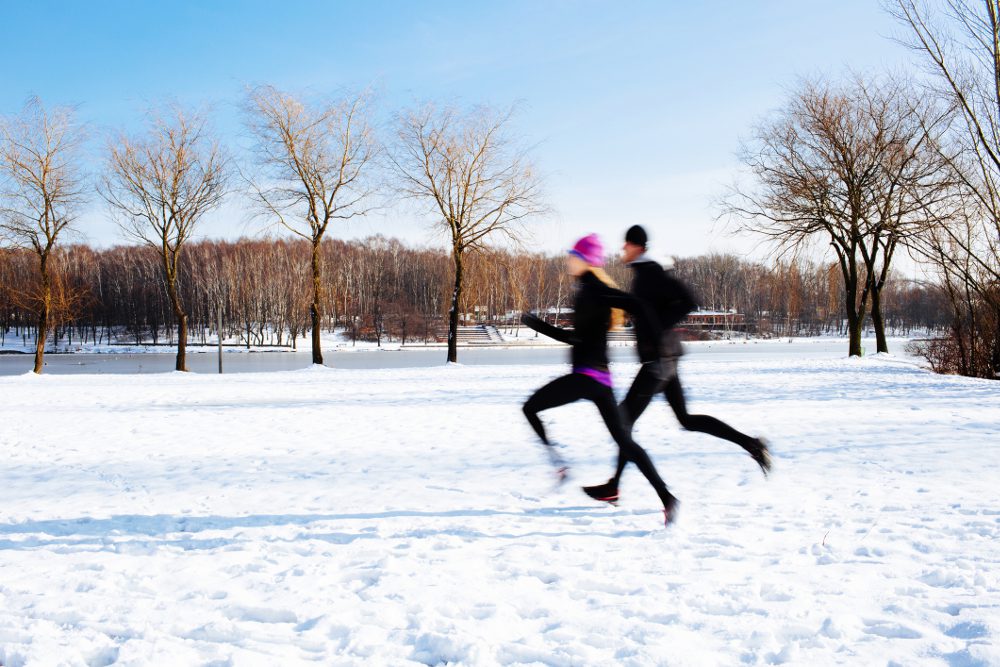Cold weather running – What you need to know


Here are a five common questions and concerns about running in the cold and snow. We provide you with what you need to know as well as offer some simple solutions to help cope so you don’t need to miss your run.
1. It’s too cold to run!
All runners have likely heard the quote: “There’s no such thing as bad weather, just soft people.” Regardless of the temperature and conditions, finding a way to run is almost always a possibility. Dressing appropriately for the weather conditions can’t be stressed enough and can make the difference between a great run and a terrible one. Choosing the right apparel, from short shorts to thermal tights, is a key skill that even the seasoned runner can struggle with. While there are no rules or regulations for what to wear on any given day, there are some common beliefs and time-tested traditions that seem to work well for everyone.
2. Is breathing freezing cold air bad for my lungs?
In short, no, it isn’t. Although it can feel that way at times, especially on those first few cold days. The body has the remarkable ability to effectively warm the air entering the body and bring it to a temperature that is normal and inflicts no damage to the lungs or airways. Some complain of the sensation of tasting blood in their mouth on cold days, especially when running at a higher intensity. Although the cause of this is unknown, most believe it is not serious but simply caused by irritation to mucous membranes. Those with existing breathing problems or conditions may feel exaggerated effects and should take extra precaution. One suggestion on how to handle really cold air is to wear a balaclava around the mouth that doesn’t obstruct your breathing.
3. Why are my hands and feet so cold?
In cold conditions, and particularly after a sudden change of environment, like going from your warm room temperature home to the minus fifteen frozen tundra outside, the body’s natural response is to redirect circulation from the extremities to the organs. Unfortunately, this means that the hands and feet are affected the most and the reduced blood flow creates the sensation of being cold. After several minutes your continued activity will notify the brain you’re OK and regular circulation will return. Be sure to wear a good pair of gloves or mittens — the latter is actually much warmer — as well as a hat or toque to keep your head warm.
4. How can I prevent slips and falls?
Where snow and ice is concerned, slips and falls can and do happen, but you can take precautions to minimize the risk. Seek out running routes that are well illuminated, consistently cleared and sufficiently salted. Consider a pair of trail shoes with good tread or, better yet, invest in some Yaktrax, Icetrekkers or Nanospikes. Getting improved traction from your footwear will provide the confidence you need to run safely and comfortably.
5. Should I be worried about frostbite?
In most cases no, especially if you dress appropriately and ensure a majority of your skin is not exposed. Tights, thermal long-sleeves, jackets, toque and mitts or gloves pretty much ensure this is the case when the temperatures really start to drop. Frostbite is localized damage to the skin caused by freezing. It is most common in the extremities due to the previously mentioned redirection of blood flow to the core. Sustained activity and the resulting increased body temperature is usually enough to return circulation to near normal and minimize the risk of frostbite. That said, if you experience a loss of sensation in your extremities as a result of extended cold exposure, seek shelter immediately and attend to the area by applying cool (never hot) running water.


